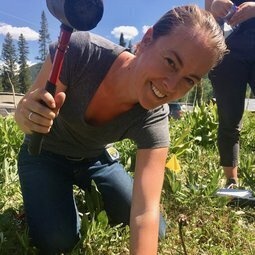Events
Seminar title: Secrets to success in the sea: Using multi-omics to understand resilience on a changing planet.
Hosted by the GSA
Seminar title: Beyond carbon in nature-based climate solutions: documenting tropical forest biodiversity loss and recovery using sounds.
Hosted by Alex Flecker
Seminar title: Getting to the root of climate change in wetlands.
Hosted by Meredith Holgerson, Roxanne Marino, and Christy Goodale
Seminar title: Phenology of disturbance in lake ecosystems.
Hosted by Meredith Holgerson
Seminar title: Dinosaur extinctions, early eukaryotes, and coastal hypoxia: stable isotope tools for evaluating environmental change, ecology, and anthropogenic impacts.
Hosted by Jed Sparks
Seminar title: Fifty Years of Fishes.
Biogeochemical landscapes across scales: The role of imaging spectroscopy in Earth system and critical zone science.
Hosted by Meredith Holgerson, Roxanne Marino, and Christy Goodale
Seminar title: How hosts adapt: Predicting evolution to non-pathogenic microbes.
Hosted by Megan Greischer
The Fulbright U.S. Student Program provides full funding for graduate and professional students conducting research in any field or teaching in more than 150 countries. Open to U.S. citizens only. The Fulbright-Hays Doctoral Dissertation Research Abroad program supports doctoral students conducting research in modern languages or area studies for six to 12 months.
Open to U.S. citizens and permanent residents of the United States. Travel to Western European countries is not eligible.
Register here. Can’t attend? Contact fulbright@einaudi.cornell.edu.
Seminar title: How to make a male-like female: unravelling the molecular basis of inter-sexual mimicry in damselflies.
Hosted by Anurag Agrawal










